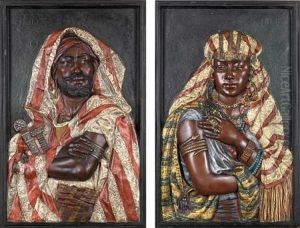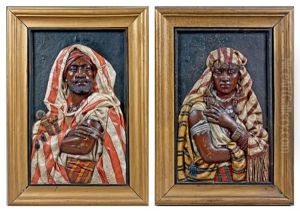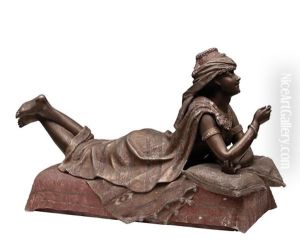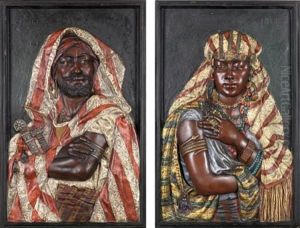Louis Hottot Paintings
Louis Hottot was a French sculptor and artist known for his Orientalist works, which were inspired by French colonial interests in North Africa and the Middle East during the 19th century. Born in 1829, Hottot's artistic career flourished during a time when Europe was fascinated with exotic cultures, and there was a trend among artists to depict scenes and subjects from these faraway lands.
He studied sculpture under various masters and developed a particular interest in creating decorative objects that reflected the aesthetics of the Orient. Hottot's work included a range of items such as vases, clocks, and lamps, all adorned with intricate details and figures that evoked the mystery and allure of the East. These pieces were often cast in bronze and highlighted with patinas or enamel to enhance their exotic appeal.
Hottot's sculptures were characterized by a mix of realism and romanticism, capturing both the likeness and the perceived spirit of their subjects. His works were shown at the Paris Salon, an official art exhibition of the Académie des Beaux-Arts in Paris, which was the primary showcase for French artists to display their latest creations. Hottot's contributions to the Orientalist movement were well-received, and he gained a reputation for the quality and originality of his designs.
Despite the popularity of Orientalist art during Hottot's lifetime, the movement later faced criticism for its often stereotypical and Eurocentric portrayal of Eastern cultures. Nonetheless, Hottot's works remain valuable for their artistic craftsmanship and as historical artifacts reflecting the cultural attitudes of his time.
Louis Hottot passed away in 1905, leaving behind a legacy of decorative art that continues to be appreciated by collectors and scholars of the Orientalist period. His works can be found in private collections and occasionally appear in art auctions, where they are sought after for their beauty and historical significance.



